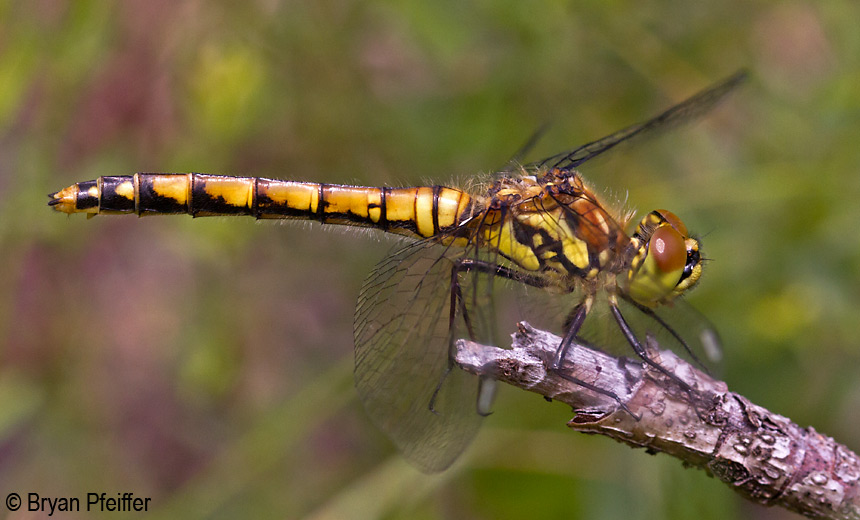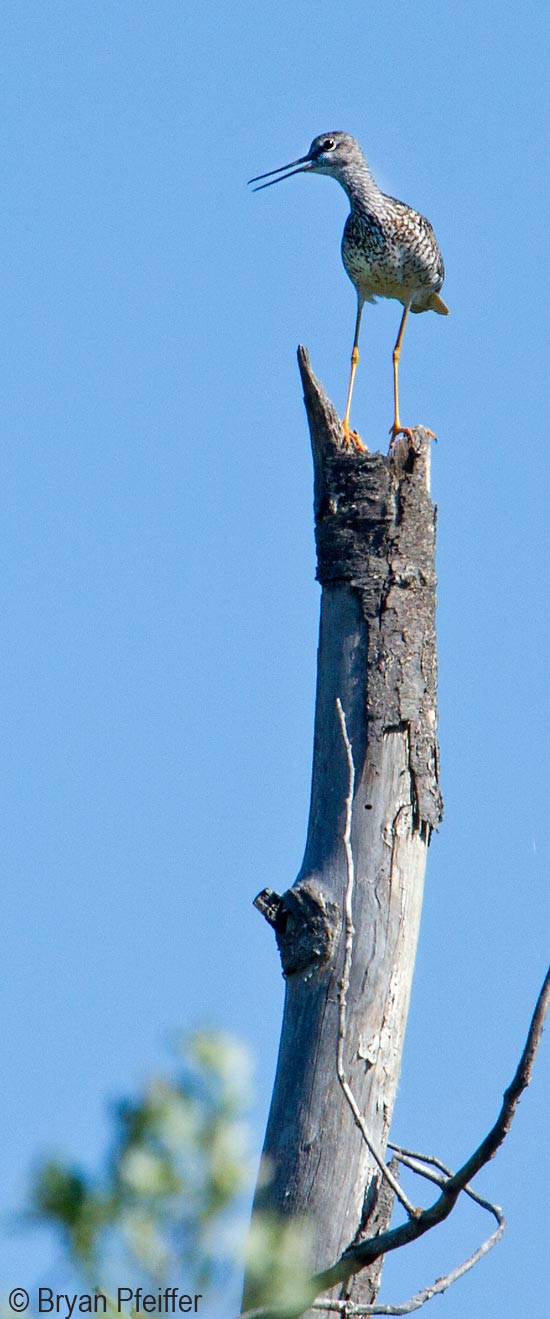DSA Update No. 3 and What’s This? No. 13
 My regular What’s This? photo challenge joins my updates from the annual meeting of the Dragonfly Society of the Americas here in Prince Albert, Saskatchewan. So, yeah, you can probably determine what animal this belongs to. But name it to species and win $5 off any of my outings or workshops. In the meantime, have a look at the previous 12 What’s This? challenges.
My regular What’s This? photo challenge joins my updates from the annual meeting of the Dragonfly Society of the Americas here in Prince Albert, Saskatchewan. So, yeah, you can probably determine what animal this belongs to. But name it to species and win $5 off any of my outings or workshops. In the meantime, have a look at the previous 12 What’s This? challenges.
Added July 13: We have a ringer, er, I mean winner. Jim Johnson was the first to identify this as the abdomen of a female Black Meadowhawk (Sympetrum danae). (Jim’s here at the meeting.) Yeah, I know this meadowhawk is not particularly black. But some newly emerged dragonflies, like this one, take a few days or even longer to “mature” into full adult “plumage” (to borrow birder parlance). I haven’t yet photographed a full-on adult, which is indeed mostly black with reduced yellow markings. Most folks who know meadowhawk see red – the two-inch dragonflies of varied habitats, including meadows, in summertime. Brian Parson’s also got this one; he’ll be the non-DSA winner. Our shorebird is a Greater Yellowlegs, although if I had the option I would have called it a “Medium Yellowlegs” (based on that “in-betweener” look to the bill). I have to admit to struggling with this one. When I get some time (and get back into “bird mode”), I’ll blog on it. But for now note the horrible view of the extent of barring on the flanks. Oh, and many thanks to the ever-vigilant Sara Backer for correcting my longevity.
As for the DSA meeting, we wandered rivers and fens and ponds near Prince Albert on Thursday, finding orchids and odonates. Aeshna juncea (Sedge Darner) is fairly regular here, with a few folks catching Aeshna sitchensis (Zig-Zag Darner); we expect the latter to become more common farther north. Ophiogomphus colubrinus (Boreal Snaketail) and O. severus (Pale Snaketail) are our only two members of that wonderful genus. (More on them coming soon.) Some of us also made an excursion for Northern Hawk-Owl and Great Gray Owl Thursday morning. No luck. But we did managed something I had never witnessed in nearly fourty four decades of birding: a shorebird in a tree. That’s what some members of the genus Tringa, like this yellowlegs, do up here when they’re breeding. Most of us only see them in migration. This one was scolding an American Kestrel. Extra credit: Greater or Lesser Yellowlegs?



40 decades of birding? I had no idea how old you are, Bryan. What’s your secret–nectarines?
Based on your earlier posts this appears to be S4-S10 of a female Black Meadowhawk, Sympetrum danae – I have never seen this Ode, but did enjoy reading about the DSA meeting in Prince Albert, Saskatchewan.
Abdomen of female Black Meadowhawk (Sympetrum danae); Greater Yellowlegs.